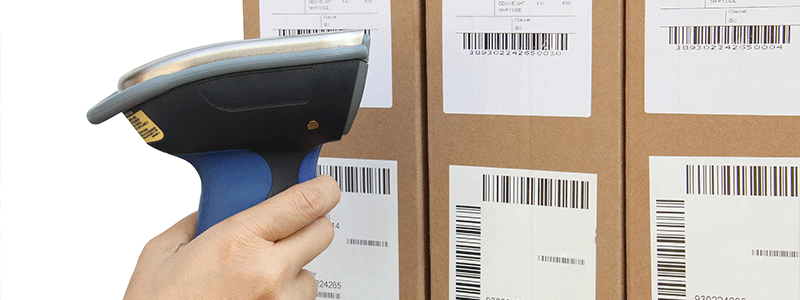
You may recognize QR codes because they are seen everywhere from soda bottles to magazine ads. QR codes or quick response codes are mostly popular in advertising because they can easily be scanned with a cell phone to give the consumer more information on the product. But QR codes are quickly becoming more popular in warehouse applications as well because of their easy scanability. QR codes are also known as matrix barcodes as they scan from left to right and from top to bottom. This means they can hold more data than a standard barcode which generally only scans horizontally.
Benefits. QR codes are beneficial in warehouse applications when it comes to asset management. Since a QR code can hold so much more information than a standard barcode, employees can use QR codes to track even more than the names and prices of products. They can go as far as tracking serial numbers, part numbers, lots and dates, and other data. QR codes are also helpful when a company’s barcode system reaches capacity due to such a high number of products. QR codes are able to have more variation and therefore can store the information on far more products than barcodes.
When it comes to inventory management, many warehouses would rather use QR codes because of their readability. They can easily be read using a cell phone rather than a hand-held scanner. Though hand-held scanners tend to be more accurate when it comes to scanning barcodes, this does not necessarily hold true when it comes to scanning QR codes. Additionally, hand-held scanners tend to be bulky and inconvenient. This also means that if a warehouse were to switch over form barcodes to QR codes, they do not have to purchase new scanning equipment as employees would often prefer to use their smartphones.
Disadvantages. One of the main disadvantages to using QR codes is their size. At a minimum, QR codes must be 2cm by 2cm, and if you would like to add more information to a product’s QR code, the label must be made even bigger. This problem comes in when warehouses are trying to track smaller assets where a QR code label may not necessarily fit.
Switching over from barcodes to QR codes can also be time consuming as many warehouses already have a barcode system in place. Relabeling is tedious work and reentering information in a computer system can be downright agonizing. And if all the data you need on a product can already fit on a barcode, there is no reason for you to take the time to switch from barcodes to QR codes.


.png)

